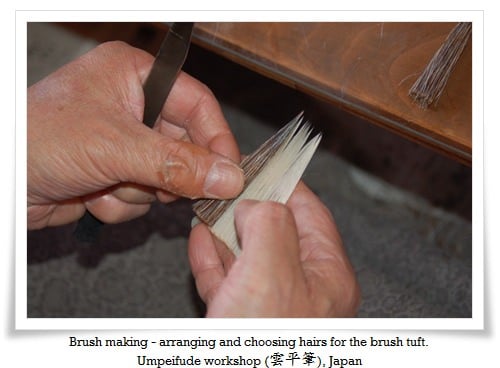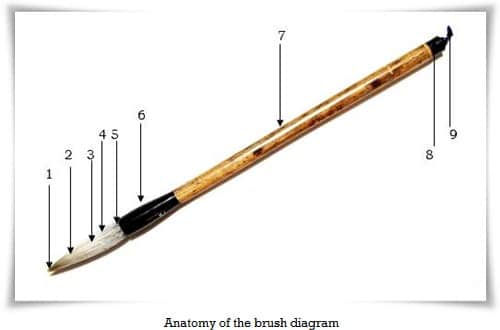There are two major brush making methods. One results in a type of brush we can commonly buy today, and the other so called in Japanese maki fude (巻き筆. lit. “wrapped brush”). The main difference is that the hairs of maki fude are strengthened with special hemp paper wrapping. Maki fude was popular in Japan until 17th century when a scholar Hosoi Kotaku (細井広沢1658 – 1735) has introduced a new brush type which is used till modern era. Today, maki fude are utilized mostly during Shinto religion ceremonies.
- The most vital part of the brush is its very tip – known as “hairs of life” (1-命毛, inochioge).
- “Throat” (2-喉, nodo) is a place where ink is being soaked inside the brush. It is achieved thanks to different hairs length; long on the outside, then shorter layer and a longer one.
- “Shoulders” (3-肩, kata) support the “stomach” and assist with ink releasing.
- Once the Ink has been soaked through the neck it goes the to the “stomach” (4-腹, hara) which holds the ink.
- The “loins” (5-腰, koshi) plays a crucial role as well, if not flexible and strong enough the whole brush will lose its vitality and responsiveness.
- The hairs are mounted inside the ferrule (6-軸先, jikusaki).
- Brush handle (7-筆管, hikkan)
- The opposite side of the brush to the tuft consists of “tail bone” (8-尻骨, shiribone)
- The last piece of the brush is the hanger (9-掛け紐, kakehimo)


